Are you feeling discouraged by the limited space of your small garden? Don’t worry, you’re not alone. Many homeowners struggle with the challenge of creating a beautiful outdoor space in a diminutive area. However, with the right planning and creativity, and by following our handy tips, you can turn even the smallest garden into a charming and functional oasis that you’ll love spending time in.
So don’t let limited space hold you back from enjoying the beauty and benefits of having a green space. With a bit of planning and creativity, your small garden can be just as charming and inviting as a larger one.
5 tips for planning a small garden
To help you get started, we’ve put together our top 5 tips for planning a small garden:
- Plan for the space you have
Consider the size and shape of your space and think about how you can make the most of it. Make a list of the features and plants and features you want to include. - Think about budget
A small garden can be lower in cost as you might be able to get leftover materials or offcuts for cheap! - Create a focal point
A water feature, sculpture, or seating area can create a focal point that draws the eye and adds personality. - Make use of vertical space
Adding trellises, hanging baskets or wall-mounted planters can maximise your space and add visual interest to your small garden. - Keep it simple
Less is often more when it comes to a small garden so keep it simple and uncluttered to create a sense of space and openness.
20 ideas for a small garden
Keep it Vertical
Vertical structures, planters, and accessories can make your small garden look bigger for several reasons.
Firstly, they help to draw the eye upwards, creating the illusion of height and depth. This can make your garden feel more spacious and open, even if it’s quite compact. By making use of the vertical space in your garden, you can also free up valuable floor space for other features, such as seating or a patio.
Additionally, vertical structures and planters can add layers and dimension to your garden design, making it more visually interesting and inviting.
Overall, incorporating vertical structures and accessories is a smart and effective way to make the most of your small garden and create a beautiful and functional outdoor space.
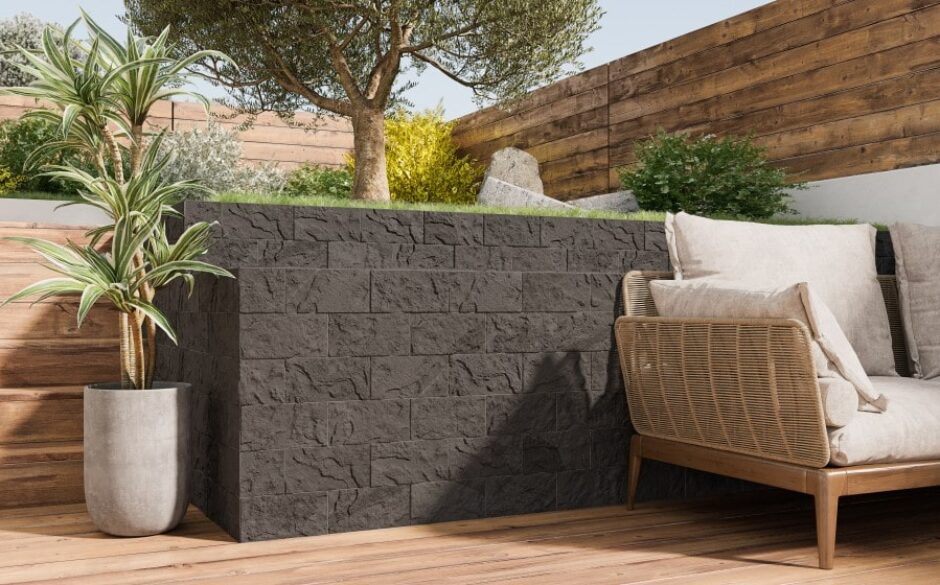
Ordesa Stone Effect Anthracite Wall Tiles
Zones
Creating zones in a small garden is a great way to maximize space and make the most of your outdoor area.
By dividing your garden into sections, you can create distinct areas for different activities, such as dining, relaxing, and gardening. This can help to create a sense of structure and organisation in your garden, making it feel more spacious and functional.
To create zones, consider using different materials, such as decking or paving, to define each area. You can also use plants, screens, or other features to create separation between zones. By dividing your garden into sections, you can make the most of every inch of space and create a beautiful and functional outdoor oasis.
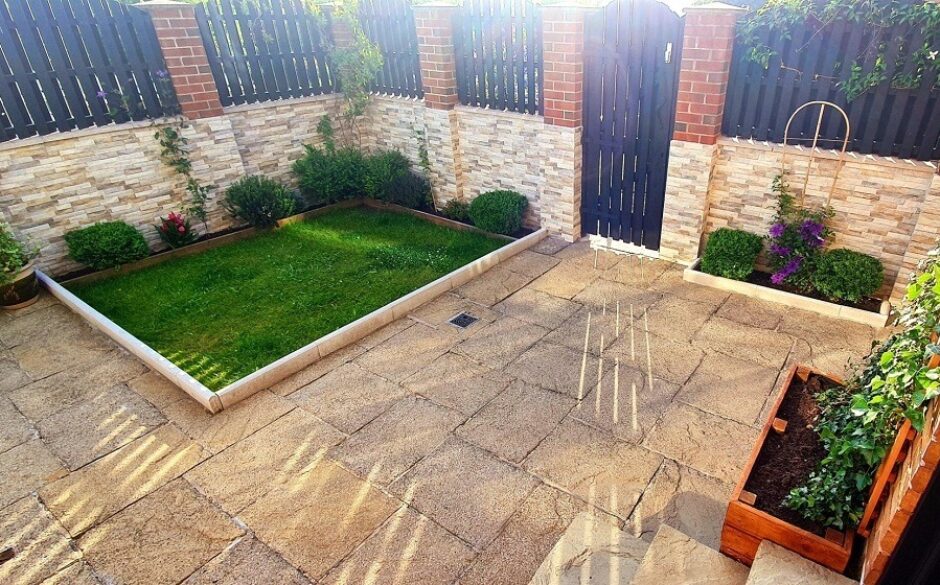
Ordino Beige Split Face Tiles
Try Mediterranean Style
It’s safe to say that Europeans really know what they’re doing with their outdoor spaces. Vine-entwined verandas, chic patios and gorgeous landscapes can be difficult to recreate in small spaces, so the Mediterranean style offers a simple yet elegant alternative.
Add a touch of gravel around your tiles for that authentic European look and enjoy soaking up the warm weather. Light tiles are best to use to achieve a stylish and contemporary Mediterranean space.
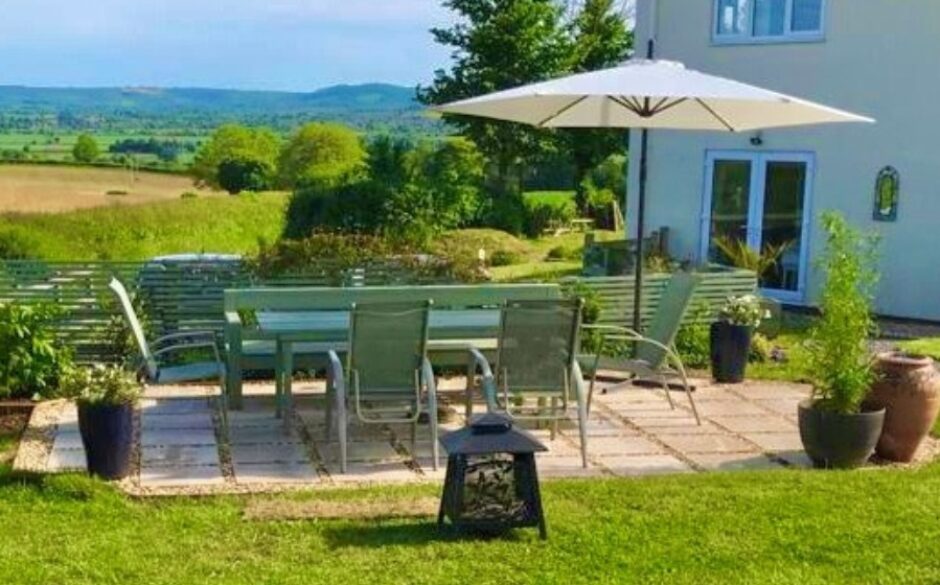
Magma Patio Tiles
Compact cultivation
If you have a super small garden with hardly any room, you might think that there’s no space for growing anything, but there are still plenty of options.
Multi-level planters are an excellent solution for small gardens as they can maximize space while creating a stunning focal point. These planters consist of multiple tiers or levels, which allow you to grow plants at different heights. This not only creates visual interest but also allows you to grow a greater variety of plants in a limited space.
You can also opt for compact plants, such as herbs or succulents, that don’t take up much space.
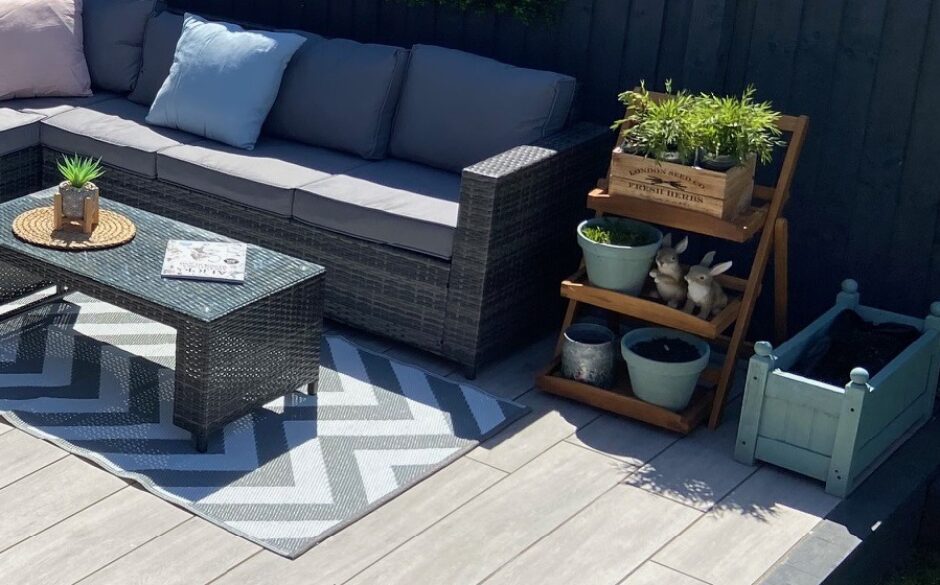
Maryland Garden Living Room
A minimalist approach
Sometimes less is more, and a minimalist small garden can offer several benefits. By keeping the space simple and uncluttered, you can create a more spacious and open feel. This can help to make the area feel less cramped and more relaxing, which is especially important when you’re dealing with limited space.
Why not choose a statement piece, such as a small water feature, sculpture, or seating area? This will create a focal point and really show off your personal style without overwhelming the space.
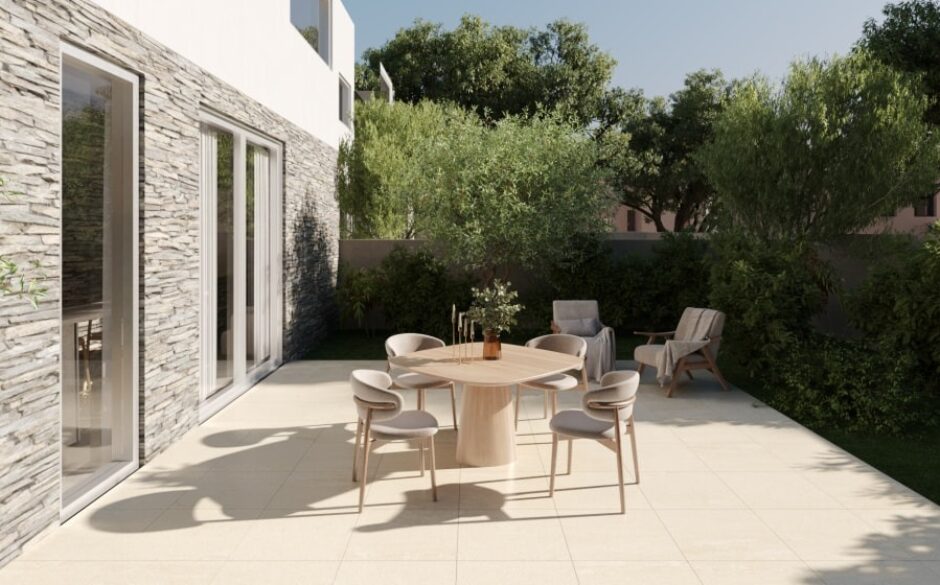
Quartz White 20mm Tiles
Create a focal point
Creating a focal point in a small garden can add depth and interest to your outdoor space. A feature wall or floor made from a unique material, such as mosaic tiles or reclaimed wood, can make a bold statement.
Alternatively, you can add a feature such as a sculpture, a water feature, or a garden ornament to draw the eye and create a focal point. DIY options for a feature wall include painting a mural or hanging a collection of framed artwork. You can also make a stunning focal point from a raised bed or flower patch.
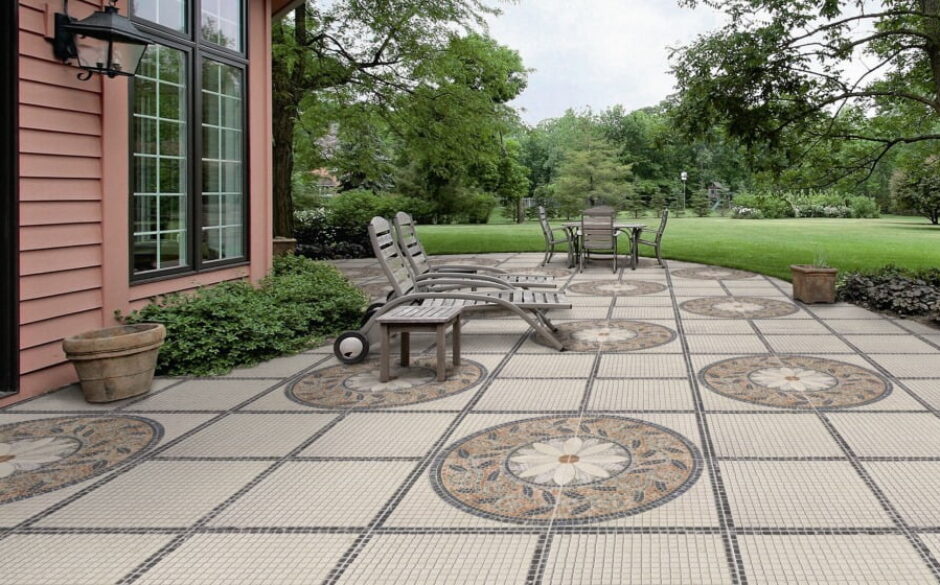
Trevi Beige Mosaic Floor Tile
Mirror mirror on the garden wall
Mirrors can be a game-changer for a small garden. By strategically placing mirrors in your outdoor space, you can create the illusion of more depth and space.
Mirrors can reflect light and greenery, making the area feel brighter, more open and more inviting. They can also help to visually expand the boundaries of your garden and create the illusion of a bigger outdoor area.
Additionally, mirrors can be a beautiful decorative element in your garden, adding a touch of elegance and style.
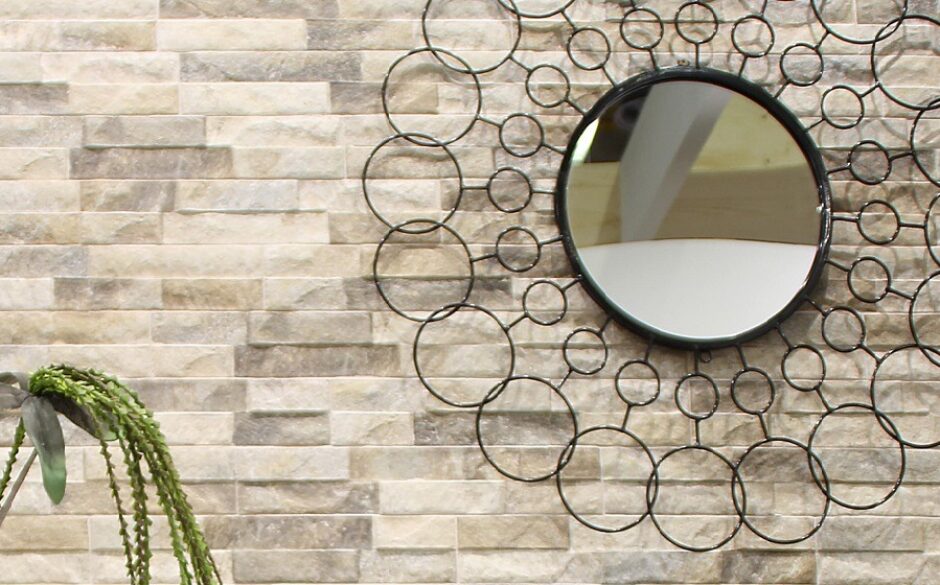
Ordino Beige Tiles
Light it up
Incorporating lighting into your small garden can offer a range of benefits, making it an essential aspect of garden design. First, it can make your garden look larger and more spacious, as it draws attention to the various features and elements.
Secondly, it can create a cosy and inviting atmosphere, making it a perfect spot for relaxing or entertaining. Adding string lights or lanterns can also enhance the aesthetic of your garden and add a touch of whimsy.
Furthermore, solar-powered lights are an eco-friendly option, reducing your electricity usage while still providing beautiful illumination. By adding lighting to your small garden, you can transform it into a beautiful and magical space that you can enjoy day and night.
Solar Geo Lights from glow.co.uk
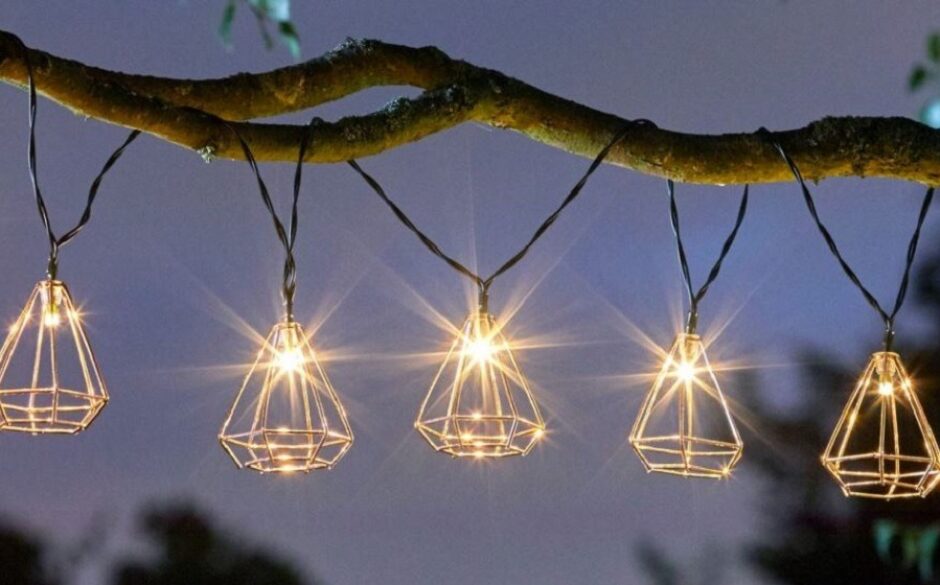
Geo Solar Lights from glow.co.uk
Flooring for a small garden
When it comes to choosing flooring for a small garden, there are a few important factors to consider.
Firstly, you’ll want to choose a material that is durable and weather-resistant, as your outdoor flooring will be exposed to the elements.
Secondly, you’ll want to choose a material that complements the style of your garden and your home. Options like tiles, decking, patio pavers, or gravel can be great choices for a small garden, as they are low-maintenance and can create a cohesive look.
Finally, consider the size and layout of your garden and choose a flooring material that will help to visually expand the space and create a sense of flow.
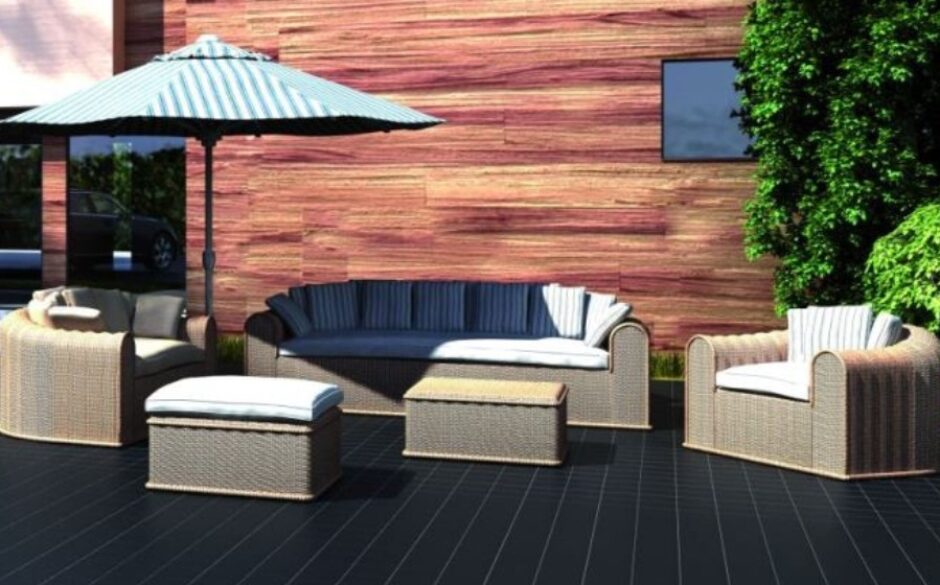
Spanish Black Quarry Tiles
Functional furniture
When choosing furniture for a small garden, it’s important to select pieces that are both functional and space-saving.
Look for furniture that can be easily folded or stacked when not in use, such as collapsible chairs or tables. Opt for smaller-sized furniture, like a loveseat or bistro table and chairs, that won’t overwhelm the space, or multi-purpose pieces like an up-down coffee table that can be raised to dining table height.
And don’t forget to choose pieces that complement the style and colour scheme of your garden for a cohesive and stylish look.
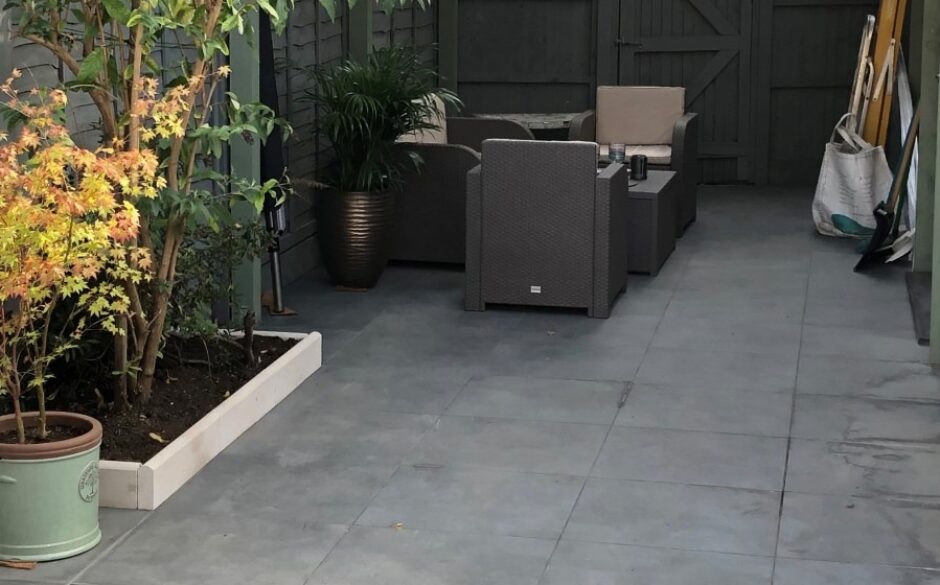
Architonic Porcelain Grey Anti Slip Tiles - Rectified
Designer Doors
When designing a small garden, the type of windows or doors in your house can play a big role in creating an indoor-outdoor flow.
Bifold doors and French windows are both excellent choices for small gardens as they can help to blur the lines between indoor and outdoor living spaces. Bifolds offer a completely unobstructed view and create a seamless transition between the two areas. French windows, on the other hand, provide a more traditional look and feel, while still allowing plenty of light and fresh air to flow through.
By choosing the right type of doors or windows, you can help to create a larger and more functional space in your small garden.
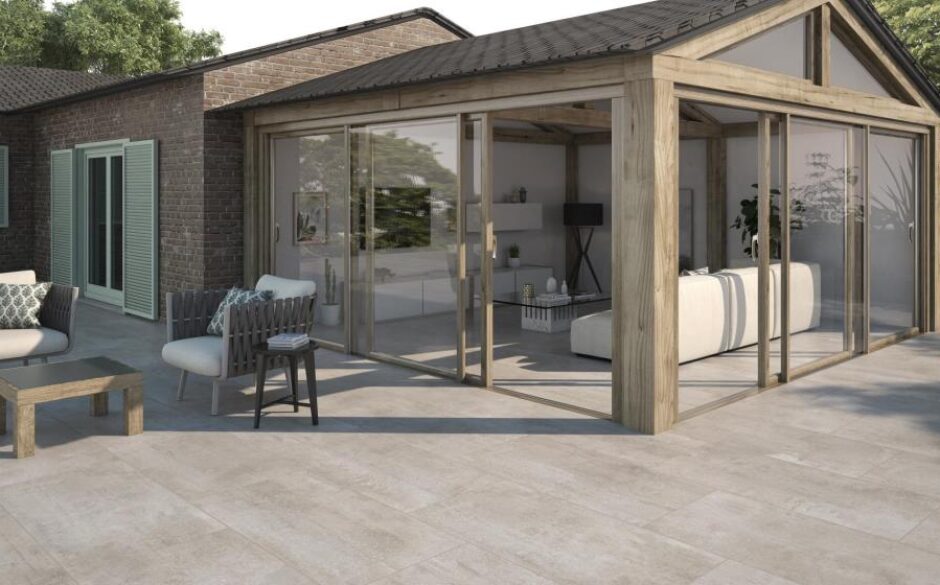
Duplocem Taupe Outside Tiles
Sheds and summerhouses
You might think that a shed or summer house is an immediate ‘no’ for a small garden, but there are plenty of compact and stylish options available on the market. By choosing a shed or summer house that fits the scale of your garden, you can create a cosy and functional space without overwhelming the rest of your outdoor area.
Plus, with the right design and placement, a shed or summer house (or even a Greek taverna like Susan’s!) can even enhance the look and feel of your small garden, adding interest and charm.
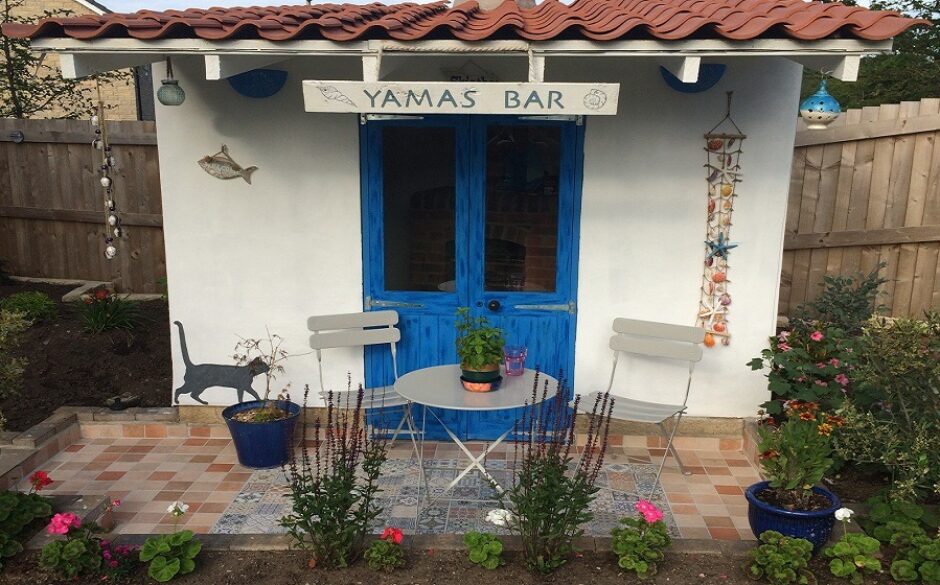
Customer Greek Taverna with Provence Tiles
Feature wall
A feature wall can add character and depth to a small garden, creating a focal point that draws the eye and adds visual interest. It can be a simple yet effective way to add personality and style to your outdoor space, and it doesn’t have to take up much room.
Choose a wall that you want to highlight and consider using materials like tiles, wood, or even paint to create a unique look. You can also incorporate plants or other features into the wall design, such as a vertical garden or a water feature.
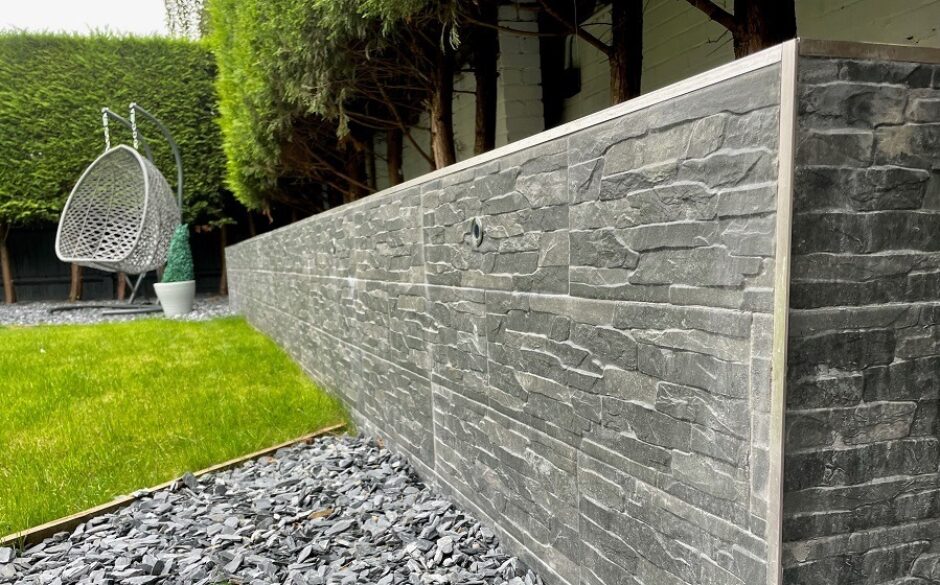
Kamale Split Face Tiles
Different textures
Using different textures in a small garden can add depth and interest to your outdoor space. Consider incorporating various textures, such as smooth stones, rough bark, or soft grass, to create a tactile experience.
You can also use different materials, such as tiles, metal, wood, or stone, to create contrast and visual interest. This can help to break up the monotony of a small space and make it feel more dynamic.
By playing with texture in your small garden, you can create a unique and inviting outdoor oasis that will be both visually stunning and enjoyable to explore.
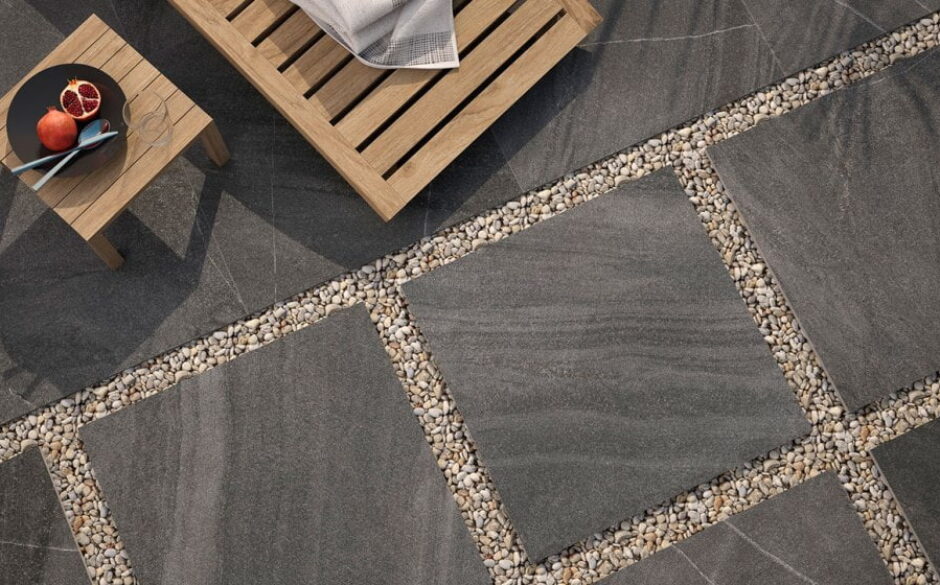
Clark Mica Dark Grey Outdoor Tiles
Indoor outdoor flow
Creating an indoor-outdoor flow in a small garden can make your space feel larger and more cohesive. One way to achieve this is by using matching flooring materials both indoors and outdoors.
By choosing the same flooring for both areas, you create a seamless transition from inside to outside, making your small garden feel like an extension of your indoor living space. This also helps to visually expand the area and make it feel larger.
Choose durable materials, such as tiles or decking, that can withstand outdoor conditions and can be easily cleaned.
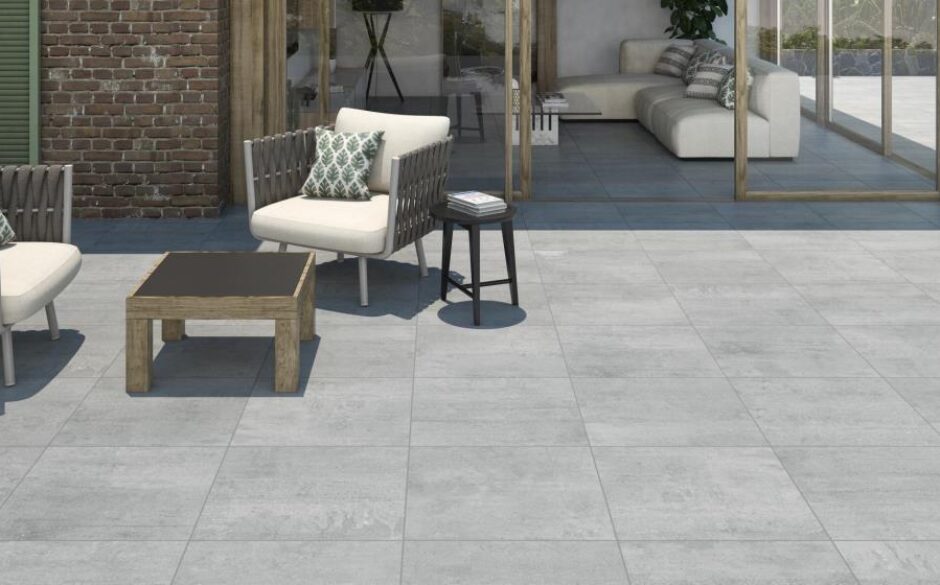
Duplocem Grey Outside Tiles
Artwork
Artwork can be a great addition to a small garden, adding a personal touch and enhancing the overall aesthetic. From sculptures to mosaics, there are endless options to choose from. A piece of artwork can serve as a focal point or simply blend in with the surrounding foliage, depending on your preference.
Consider the material and style of the artwork to ensure it complements the rest of your garden design. Metal sculptures can add a modern touch, while stone or ceramic pieces can provide a more rustic feel. If you’re feeling creative, you can even make your own DIY artwork using materials found in nature or upcycled items.
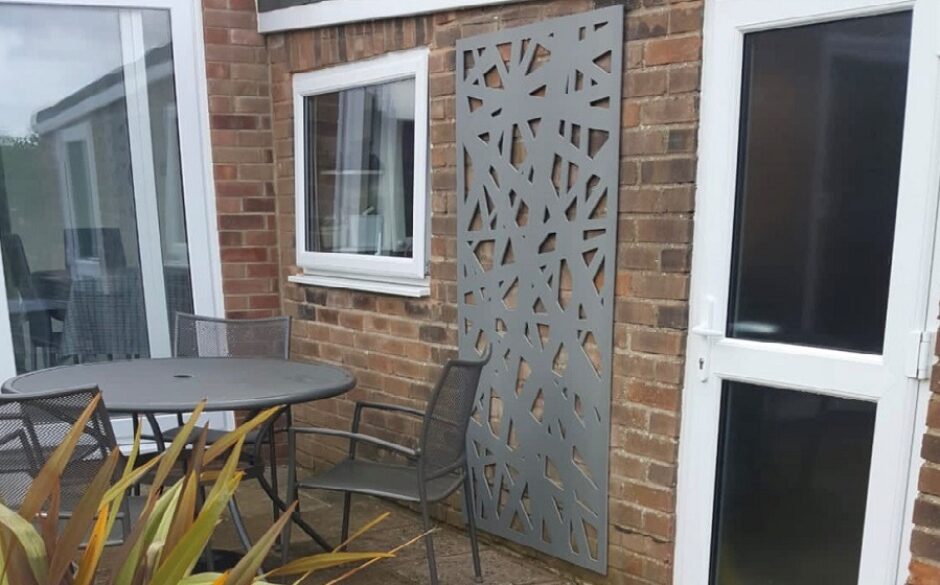
Composite garden trellis from Charles & Ivy
Colour
Using colour is a great way to add interest and create a sense of depth in a small garden. Bright, bold colours can make a small space feel larger, while pastel shades can create a soothing and relaxing atmosphere.
Consider using a colour scheme to tie everything together and create a cohesive look. Use colour strategically by placing vibrant plants or flowers near eye level or creating a focal point with a brightly coloured feature, such as a bench or a statue.
Additionally, you can use colourful planters or outdoor cushions to add pops of colour and create a welcoming and cheerful space.
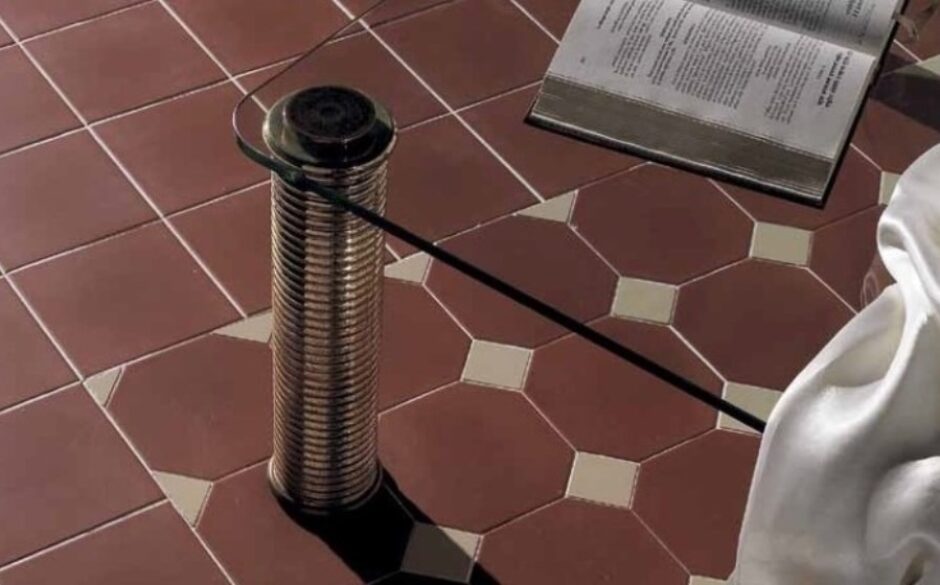
Italian Red Quarry Tiles
Pattern
Patterns can add visual interest and depth to a small garden, making it look larger and more dynamic.
Consider incorporating patterns through the use of materials such as tiles, pavers, or gravel in unique shapes or designs. For example, a checkerboard pattern can add a classic touch to a garden path while stripes can elongate a narrow area and create a sense of movement.
You don’t have to just do this on the ground, as this style also works great for wall accents.
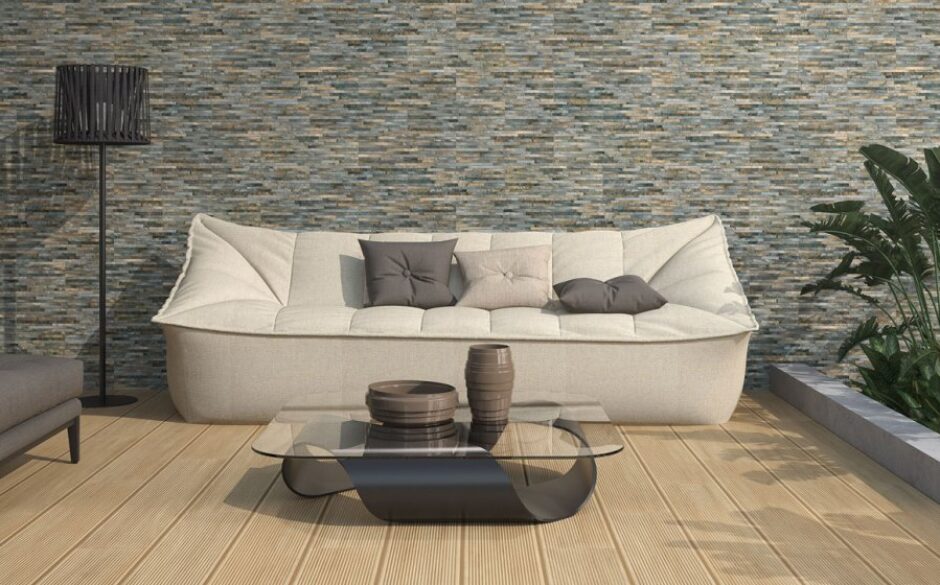
Aspen Magma Rustic Split Face Tiles
The same material in different layouts
Using the same material in different layouts is a great way to create visual interest and a cohesive look in a small garden.
For example, you can use the same paving stones or bricks to create different patterns for different zones in your garden, such as a checkerboard pattern for a seating area and a herringbone pattern for a pathway. Or alternatively, separate large 2cm tiles for a border or feature.
This creates a sense of continuity throughout your garden while still differentiating between sections.
Feature chair
A feature chair can add character and style to your small garden. It can be a statement piece that draws the eye and creates a focal point. Choose a chair that suits the style of your garden, whether it’s modern, rustic, or eclectic. Consider the materials, such as metal, wood, or wicker, and the colour or pattern of the upholstery. A feature chair can also provide a comfortable spot to relax and enjoy your garden. If you have limited space, consider a folding or collapsible chair that can be easily stored when not in use. With the right feature chair, your small garden can be both stylish and functional.
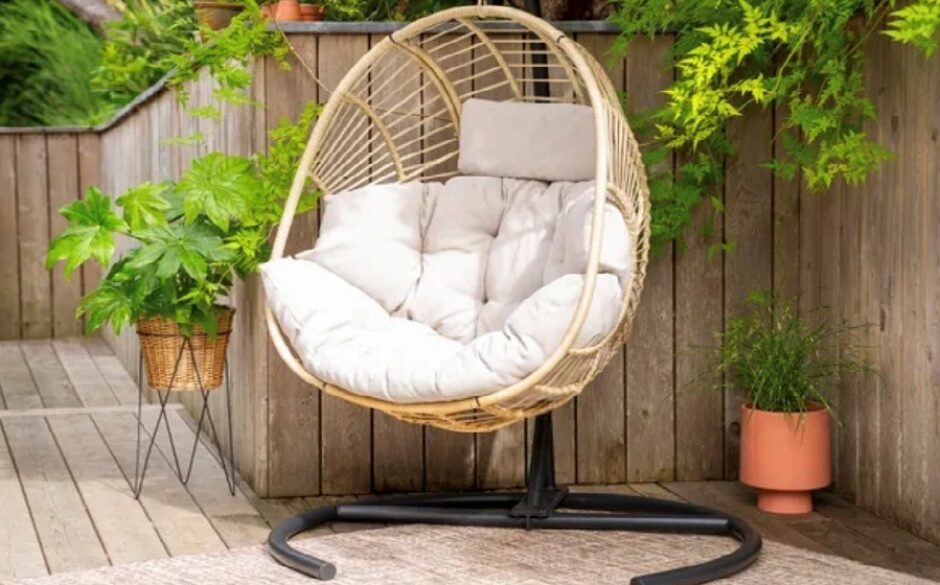
Egg Chair from Dunelm
In conclusion, having a small garden doesn’t mean you have to sacrifice beauty and functionality. With these small garden ideas, you can create a charming and functional outdoor space that you’ll love spending time in.
Whether you opt for vertical designs, container gardening, a splash of colour or a minimalist approach, there are plenty of ways to make the most of your small garden. Most importantly, have fun with it! It’s your garden to enjoy all year round.
For more inspiration on small garden ideas, why not browse through our blog, or head straight to our outdoor tiles section for the latest exterior tiles at competitive prices.
And if you’re still stuck, get in touch – we’d be happy to help you create the perfect small garden!
Have you used our tiles in your garden project on the ground or as a feature wall? Please send us some photos – we’d love to see them!

